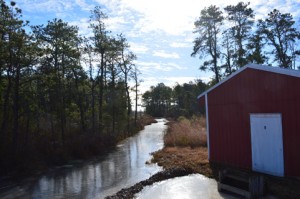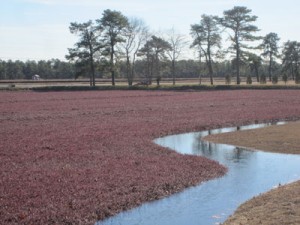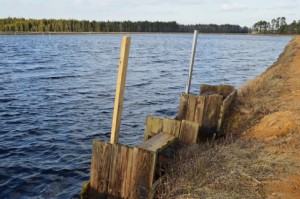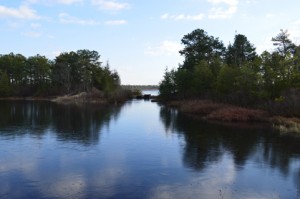One of the late Bill Sr.’s favorite maxims about just about everything involving cranberries was, “Where is the water coming from, and where do you want it to go?” That can be one of the most challenging things to pick up when you are learning about Pine Island’s irrigation system. GM Fred Torres tells newer team members all the time: “You’re not going to learn how to do this overnight.” In practice, this means constant awareness and monitoring of where the water is coming from, where it is going, and how much stream is coming down.
Assistant Manager Mike Haines is beginning to learn all about this. “Jeremy [Fenstermaker] has been showing me the different ways you can direct the water,” Mike says. “There’s no one right way; there’s just figuring out the optimal way to get them flooded quickly so they’re not damaged by the cold.” Under normal conditions, the temperature steadily drops post-harvest; it is important to wait until the vines go dormant before starting to put the water on. Once they freeze and aren’t covered with water, the roots can become exposed, and we need to cover them as fast as possible.
Flooding starts by letting in streams from the reservoirs to canals and bogs. Strategic board placement (more boards in the southernmost bogs to catch the water) will get the ditches high and running down to start flooding from the bottom up. As the water level in the bogs begins to rise, our team begins adjusting the water level in the bogs by adding boards where they are needed. Once the vines are covered and the stream has settled, we adjust the level of the reservoirs to maintain the stream and keep the bogs flooded for the winter. Wells are shut down once bogs are flooded, and only turned on again if it is dry and reservoir levels are dropping.
“I worked very closely with Gerard at the beginning of the year to learn about the water system overall,” says Mike, “but that was just the beginning. I learned about where it was coming from, but am still learning where and how each system is connected.” The flooding is just about done, but he’s also working closely with Jeremy on adjustments: “Now he’s tinkering here and there so that we have the flow we need all winter but aren’t wasting water, which also helps us work more efficiently. It’s a lot of problem solving and math, but I’m really beginning to understand.”




